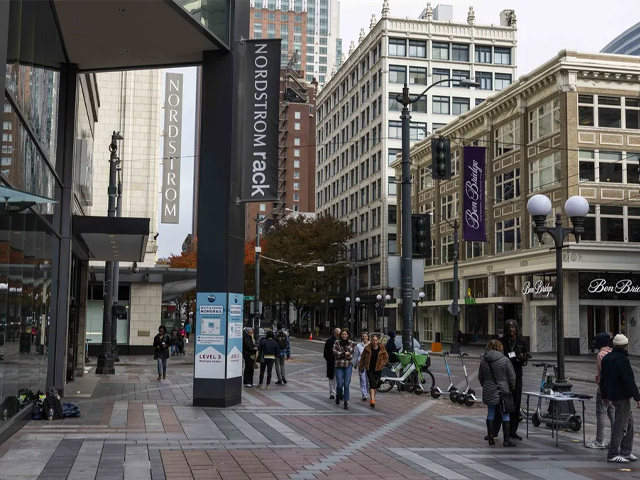News
The Seattle Times: Downtown Seattle has distinctive advantages, real challenges
Posted on

This story was originally published in The Seattle Times on March 21, 2024.
By Jon Scholes
Special to The Seattle Times
More than 1,100 civic and business leaders gathered recently for our annual State of Downtown at the Seattle Convention Center to celebrate the progress made to revitalize downtown Seattle and assess our challenges. For the first time in several years, a majority of the Seattle City Council attended — more evidence that the spirit of partnership between City Hall and the business community has been reborn.
Under the leadership of Mayor Bruce Harrell and the private sector, downtown is in a much stronger position relative to two years ago. But downtowns are fragile, and we continue to face significant threats, increased competition and changes in habits influenced by the pandemic. To keep moving forward, we must advance bold ideas, seize the opportunities before us and address pressing challenges with actions that deliver real results. The continued revitalization of downtown matters to the entire city.
Downtown Seattle has three distinct advantages that any urban center would envy. First, we’re revitalizing from a strong base with a rich mix of uses that build on business and commerce. For decades, we’ve worked to locate arenas, stadiums, arts, culture, music venues, major attractions, convention centers and cruise lines in proximity to one another. Downtown’s residential population has also grown to a record 106,000. Unlike San Francisco, where more than 70% of downtown building square footage is devoted to offices, in downtown Seattle it’s just half. In short, this varied mix offers the equivalent advantage of a diverse stock portfolio.
Second, despite recent economic uncertainty, the public and private sectors continue to invest. Over a five-year period, more than $5 billion of public infrastructure will have taken shape in Seattle’s center city. This includes a remade ferry terminal, light rail and rapid bus line extensions, the new waterfront park, the convention center addition and Climate Pledge Arena, as well as plans for a major renovation of Memorial Stadium.
Third, Seattle’s brand remains strong across the country and around the world. The summer of 2023 saw a record cruise season and the single most revenue generated in downtown hotels when Taylor Swift shook up Lumen Field in July. More than 6.5 million visitors came downtown last summer, just below 2019 figures, and foot traffic in and around some of Seattle’s major attractions, including the Space Needle, outpaced 2019 numbers. Seattle remains attractive to cruisers, convention-goers and leisure travelers who drive big spending and big tax receipts for the city.
Yet, we face serious challenges that require urgent focus and action.
Downtown has lost relevance with locals since the pandemic. Today, the frequency of visits to the core of downtown by those who live within 10 miles is approximately half of pre-pandemic levels, while visits by locals to entertainment and retail centers in other parts of the region have nearly fully recovered. Tourists are critical to downtown’s success, but downtowns must first be relevant to and desired by locals.
To attract more locals, we must first ensure it is safe, clean, healthy and welcoming. While violent crime downtown has declined, human suffering and misery have increased. The fentanyl crisis continues to worsen, with a record number of fatalities in 2023 in King County. This is a moral, medical and potential economic crisis that will keep visitors away and dissuade new retailers and restaurateurs from opening up shop and filling vacant storefronts. Seattle’s drug crisis has fully intersected with the unsheltered crisis. Drugs are now the leading cause of death among those living outside or in emergency shelters. The crisis also continues to burden the EMS system. In downtown, 911 overdose calls increased more than 100% from 2022 to 2023.
Downtown Seattle has substantial advantages over peer cities and some very real challenges that demand urgent attention and action. Thankfully, there’s now significant alignment between Seattle voters, the council, mayor and business community. Let’s make the most of this moment with a bias for action and advance bold solutions that accentuate our strengths and mitigate our threats. The very future of Seattle depends on it.
Jon Scholes is president and CEO of the Downtown Seattle Association.